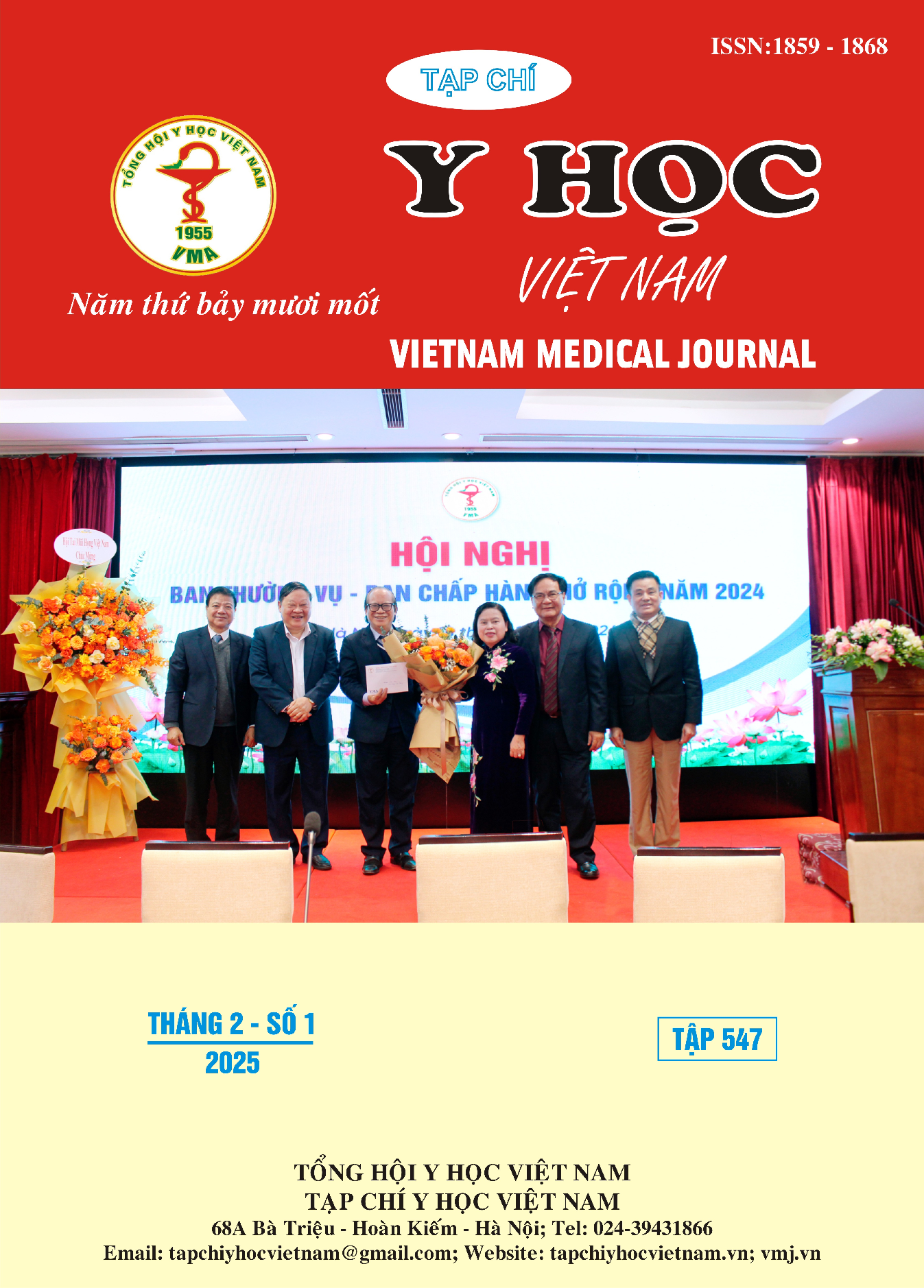THE ASSOCIATION BETWEEN CORONARY ARTERY CALCIUM SCORES AND CAD-RADS CATEGORIES ON COMPUTED TOMOGRAPHY
Main Article Content
Abstract
Objectives: To assess the value of a predictive model for CAD – RADS categories based on coronary artery calcium (CAC) scores. Subjects and methods: A retrospective cross – sectional descriptive study was conducted on 809 patients who underwent coronary computed tomography angiography at the University Medical Center in Ho Chi Minh City from November 2020 to October 2022. Result: Among the four CAC scores examined (Agatston unit, the number of calcified regions of interest (ROIs), volume, and mass), the number of calcified ROIs demonstrated significant differences between each pair of CAD – RADS categories, while the other CAC scores did not show significant differences between CAD – RADS 4 and 5. Coronary artery disease (CAD) was categorized into two groups: non-significant (i.e., CAD – RADS 1 and 2) and significant (i.e., CAD – RADS 3 to 5). All CAC scores were significantly different between the two groups, with the determined cut – off values for Agatston unit, the number of calcified ROIs, volume, and mass were 58.8, 4, 12.2 mg, and 58.1mm3, respectively. Based on the best five fitted models using BMA method, the numbers of calcified ROIs and mass were significantly associated with significant CAD (accuracy: 73%) and the most probable CAD – RADS category (accuracy: 46.9%). Conclusion: The study findings suggest that the number of calcified ROIs and mass hold value in predicting significant CAD, but accurate prediction of CAD – RADS categories remains challenging. The determined cut – off values and the developed predictive model can serve as valuable reference for cases where coronary computed tomography angiography is not feasible
Article Details
Keywords
CAD – RADS, Coronary artery calcium scores, Coronary computed tomography angiography.
References
2. Multiple Cause of Death 2018–2021 on CDC WONDER Database. Accessed October 20, 2023. https://wonder.cdc.gov/mcd.html
3. Percentage of coronary heart disease for adults aged 18 and over, United States, 2019—2021. National Health Interview Survey. Accessed October 20, 2023. https://wwwn.cdc. gov/NHISDataQueryTool/SHS_adult/index.html
4. What causes the most deaths? Accessed October 20, 2023. https://www.healthdata.org/ research-analysis/health-by-location/profiles/vietnam
5. Ngam PI, Ong CC, Chai P, Wong SS, Liang CR, Teo LLS. Computed tomography coronary angiography - past, present and future. Singapore Med J. Mar 2020;61(3):109-115.
6. Narula J, Chandrashekhar Y, Ahmadi A, et al. SCCT 2021 Expert Consensus Document on Coronary Computed Tomographic Angiography: A Report of the Society of Cardiovascular Computed Tomography. J Cardiovasc Comput Tomogr. May-Jun 2021;15(3):192-217.
7. Cury RC, Leipsic J, Abbara S, et al. CAD-RADS™ 2.0 - 2022 Coronary Artery Disease - Reporting and Data System An Expert Consensus Document of the Society of Cardiovascular Computed Tomography (SCCT), the American College of Cardiology (ACC), the American College of Radiology (ACR) and the North America Society of Cardiovascular Imaging (NASCI). Radiol Cardiothorac Imaging. Oct 2022;4(5):e220183.
8. Budoff MJ, Georgiou D, Brody A, et al. Ultrafast computed tomography as a diagnostic modality in the detection of coronary artery disease: a multicenter study. Circulation. Mar 1 1996;93(5):898-904.
9. Schmermund A, Baumgart D, Möhlenkamp S, et al. Natural history and topographic pattern of progression of coronary calcification in symptomatic patients: An electron-beam CT study. Arterioscler Thromb Vasc Biol. Mar 2001;21(3):421-6.
10. Moradi M, Rafiei E, Rasti S, Haghbin H. Coronary artery calcification-does it predict the CAD-RADS category? Emerg Radiol. Aug 4 2022:1-9.


